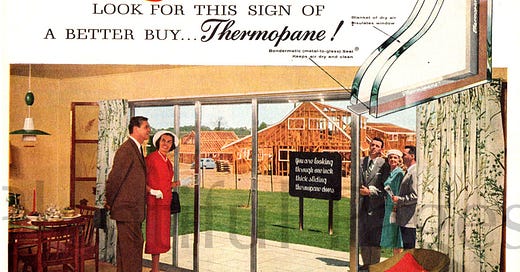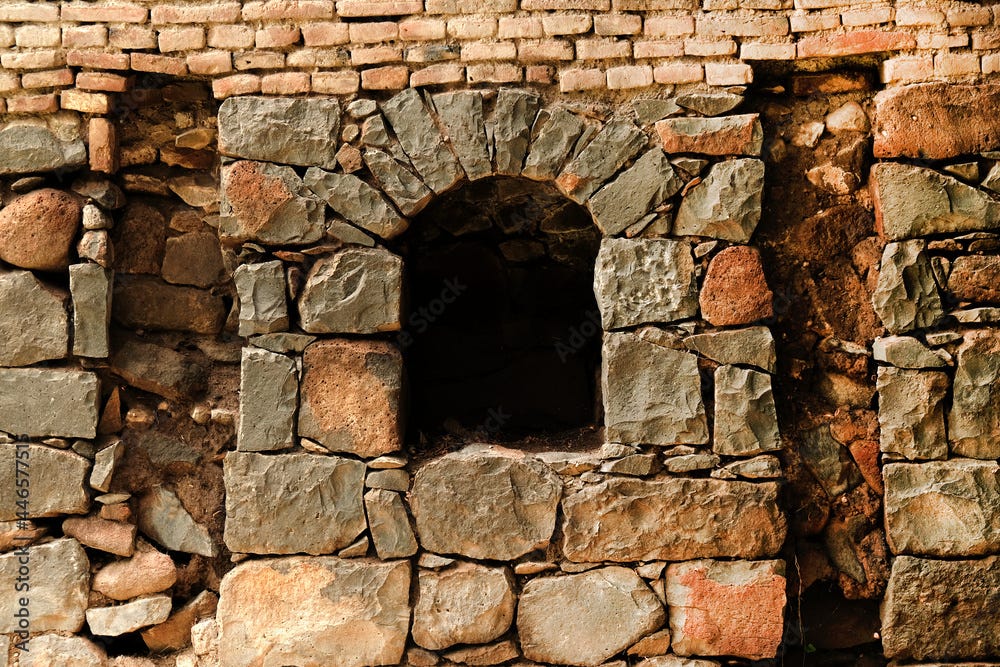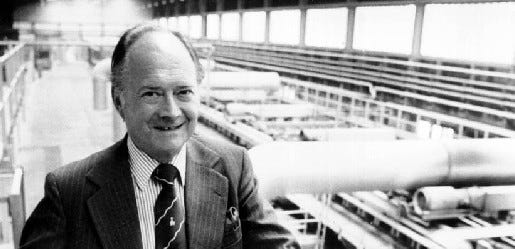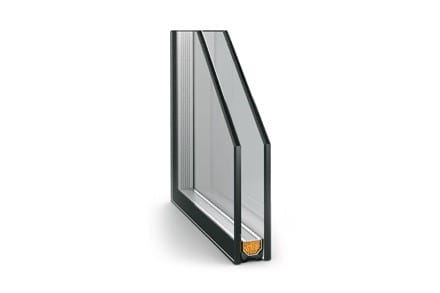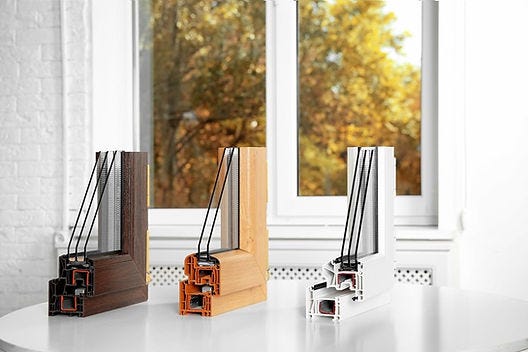I was poking around at a vintage camera and print shop in Atlanta when I came across an original magazine cutting from 1955 displaying an ad for Thermopane windows - the inspiration for today’s article!
A Slice of History!
The advertisement above is more than just a vintage piece of design. It marks a revolutionary moment in the long story of how windows have evolved, both in what they're made of and how they perform.
From Simple Openings to Early Glass
Windows began as nothing more than holes in walls, letting in light and air but also wind, rain, and cold. Early civilizations sometimes covered these openings with animal skins, cloth, or thin pieces of stone. As time went on, the Romans and Greeks experimented with covering window spaces using thin slices of marble, shells, or the earliest forms of glass. These early glass windows were cloudy and fragile, but they were a step toward letting in light while keeping out the weather.
The Rise of Modern Glass
For centuries, glass was a luxury. It wasn't until the 19th century that Sir Alastair Pilkington developed a new manufacturing which made it possible to produce perfectly flat, high-quality sheets at a reasonable cost. In this method - called the Pilkington process - molten glass was poured onto a bed of molten tin, allowing it to spread evenly and form a flat, uniform surface. The end product was called “float glass” and was used to manufacture single pane windows.
The Thermopane Breakthrough
That brings us to the Thermopane ad from 1955. Thermopane represented a huge leap forward: double-paned windows. Invented in the 1930s and brought to the mass market in the 1950s, these windows sandwiched a layer of air (or later, non-reactive gases) between two panes of glass. This design dramatically improved insulation, keeping homes warmer in winter and cooler in summer, and also reduced outside noise—a big selling point in the ad above.
Today’s High-Performance Windows
Since the days of the ad shown above, window technology has only gotten better. Modern windows often feature double or even triple panes, special coatings that reflect heat, and advanced frames that reduce drafts. These improvements mean today’s windows are not just for letting in light—they’re key players in making buildings more comfortable and energy-efficient.
A Clear View Forward
So, the 1960 Thermopane ad above isn’t just a piece of nostalgia. It’s a snapshot of a time when windows were transforming from simple barriers to high-performance features—helping shape the bright, comfortable buildings we enjoy today.
__
Arjun Bir, PE (GA, AL, TN, SC, NC), RRC, RRO
Principal & Unit Manager (Atlanta)
Copeland Building Envelope Consulting
About Me | Projects | Expertise
Schedule a Call | LinkedIn

